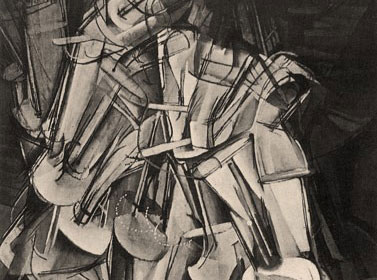TIME
ABOUT TIME:
Time is the succession of separate moments on each other, based on the earth's rotation as a measuring instrument.
Time moves on. We can visualize time as a river that we are traveling down. When we look back, we see the past; when we look ahead, we see the future.
It is possible to blend time with art. Art exists in two dimensions: time and space. Change and movement are depicted by time, and movement denotes the passage of time.
Actual movement can be found in a work of art, which means that the work of art moves; kinetic art. Or it could have the appearance of movement.
An example of movement and time in an artwork is Duchamp's Nude Descending a Staircase. The painting's peculiar impression of motion almost appears to be a time-lapse.
 Marcel Duchamp, Nude Descending a Staircase (No. 2), 1912. Oil on canvas, 57x35, Philidephia Museum of Art.
Marcel Duchamp, Nude Descending a Staircase (No. 2), 1912. Oil on canvas, 57x35, Philidephia Museum of Art.
